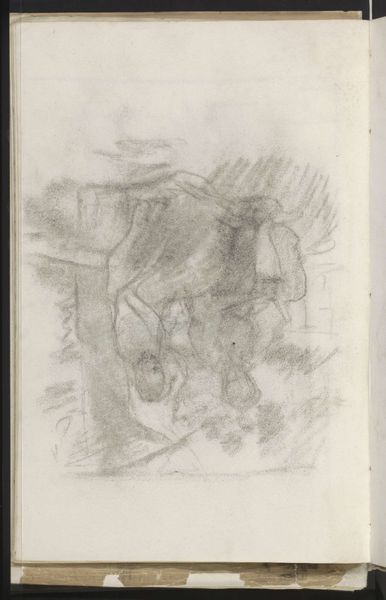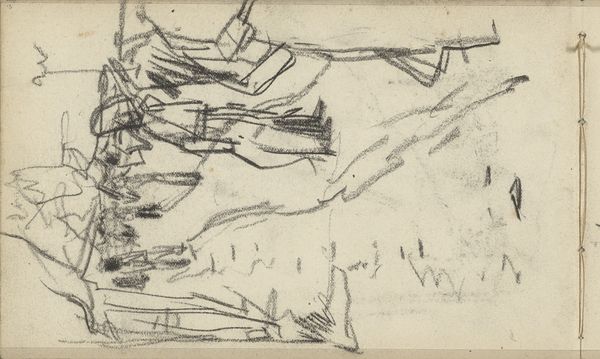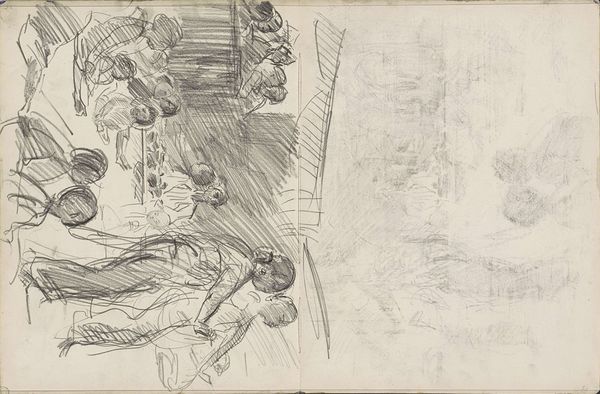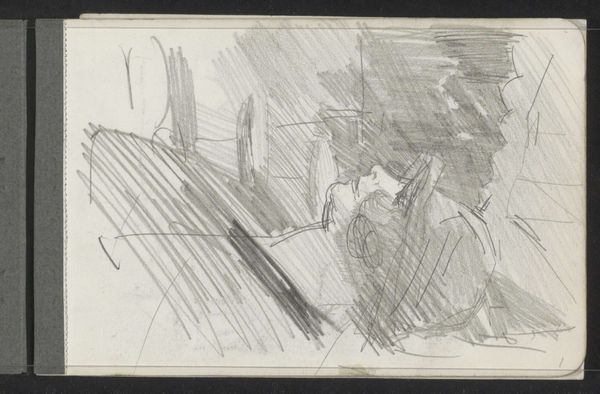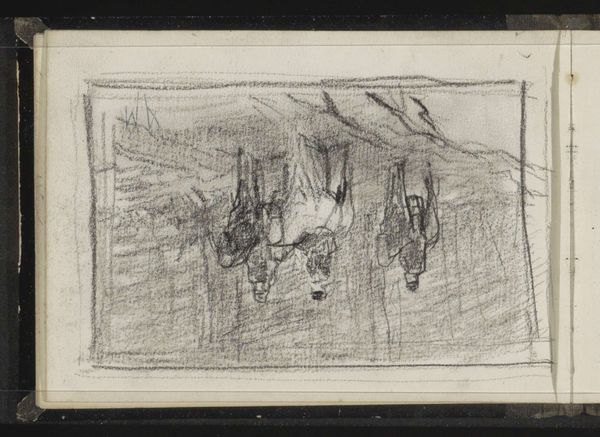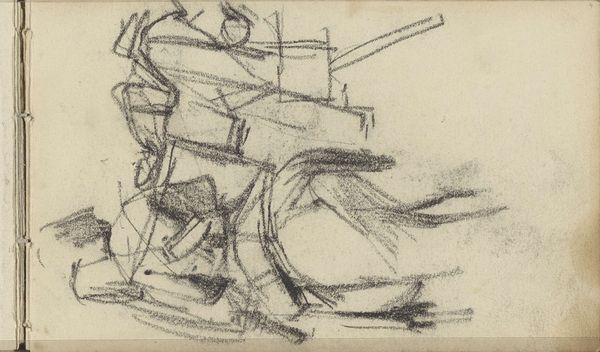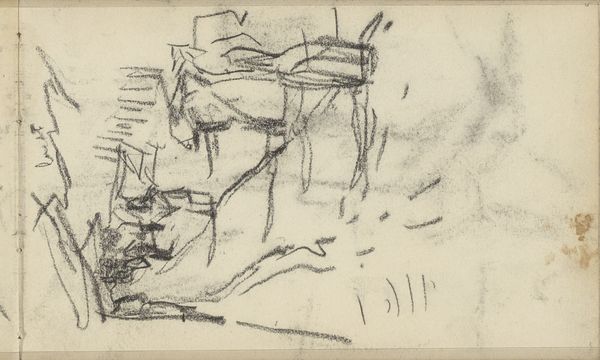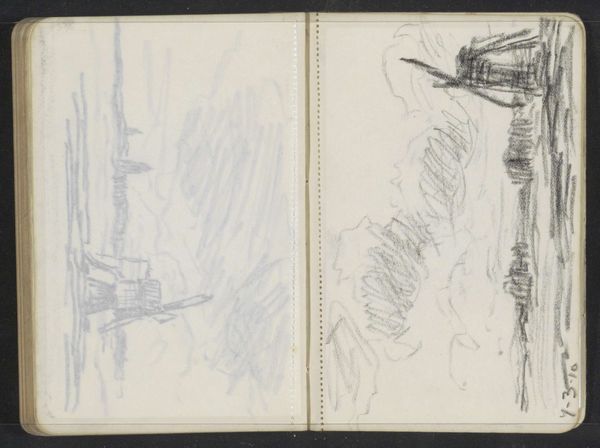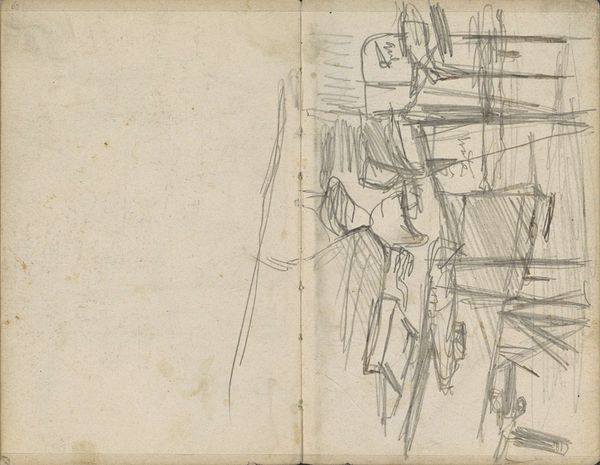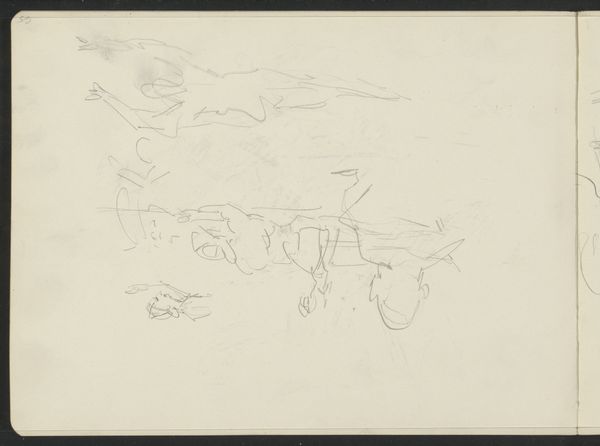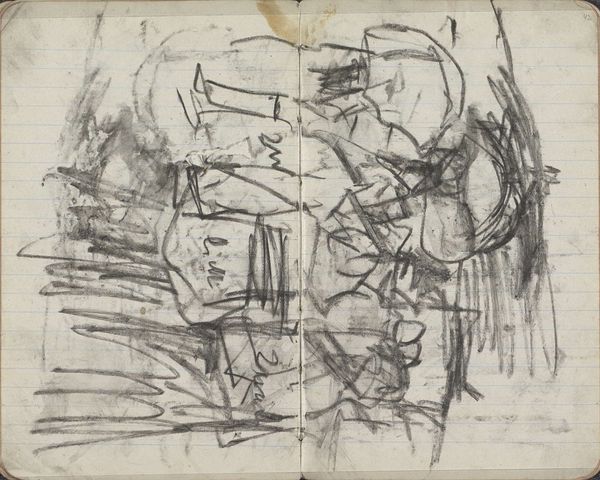
Mannen, mogelijk werklieden, voor een huis bij enkele knotwilgen 1854 - 1914
0:00
0:00
drawing, pencil
#
drawing
#
amateur sketch
#
light pencil work
#
pencil sketch
#
sketch book
#
incomplete sketchy
#
landscape
#
personal sketchbook
#
ink drawing experimentation
#
sketch
#
pen-ink sketch
#
pencil
#
sketchbook drawing
#
sketchbook art
#
realism
Copyright: Rijks Museum: Open Domain
Editor: This is a pencil drawing called "Mannen, mogelijk werklieden, voor een huis bij enkele knotwilgen" – Men, possibly workmen, in front of a house with some pollard willows – attributed to Albert Neuhuys, dating somewhere between 1854 and 1914. It's a sketch, really raw and immediate. What strikes you most about it? Curator: I see a study, an intimate glimpse into the lives of working-class men in the Dutch countryside. Neuhuys, though part of the Hague School, wasn't simply painting pretty landscapes. What do you notice about the men's posture and placement within the composition? Are they centered? Dominant? Editor: Not really. They seem almost… integrated into the landscape itself. Hunched over, almost fading into the trees and building. Curator: Exactly! And how does that relate to the socio-political context of the late 19th century? Think about the rise of industrialization, urbanization, and the displacement of rural communities. This isn't a heroic portrayal of labor. It is rather showing labor's toils, its submission to environment and circumstance. Are these men empowered? Editor: No, definitely not empowered. They're ordinary people, you can tell. The drawing feels very unvarnished and real. Curator: Precisely! This sketch pushes back against idealized portrayals of rural life so popular at the time. The unrefined lines, the lack of idealization. It shows us a social reality of marginalisation and hard labour. What does this tell us about whose stories were being told, and from what perspective? Editor: So, it’s a subtle form of social commentary. I hadn’t picked that up, but I can totally see it now! Curator: Right! The image acts as a visual record. And these everyday sketches often say so much more about power dynamics and societal values. Editor: I'll definitely look at sketches differently going forward. Thanks!
Comments
No comments
Be the first to comment and join the conversation on the ultimate creative platform.


